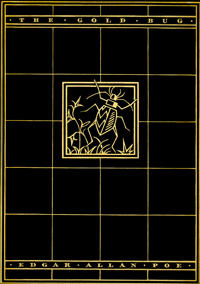 In 1839, while working as an editor for Alexander’s Weekly Messenger, Edgar Allan Poe encouraged his readers to send in cryptographs, or short encrypted texts, that he would then attempt to solve. He explained that the “ciphers” should be simple substitution ciphers, that is, readers should substitute a particular symbol for a particular alphabet letter every time it appeared in a statement. The readers responded, sending, by Poe’s estimate, “nearly one hundred ciphers.” He claimed to have solved all but one, and that one, he argued, was not a true cipher.
In 1839, while working as an editor for Alexander’s Weekly Messenger, Edgar Allan Poe encouraged his readers to send in cryptographs, or short encrypted texts, that he would then attempt to solve. He explained that the “ciphers” should be simple substitution ciphers, that is, readers should substitute a particular symbol for a particular alphabet letter every time it appeared in a statement. The readers responded, sending, by Poe’s estimate, “nearly one hundred ciphers.” He claimed to have solved all but one, and that one, he argued, was not a true cipher.
Poe was so captivated by cryptography that he incorporated it into his story “The Gold-Bug” in 1843. In this story, the character William LeGrand must solve a puzzle to find a buried treasure.

